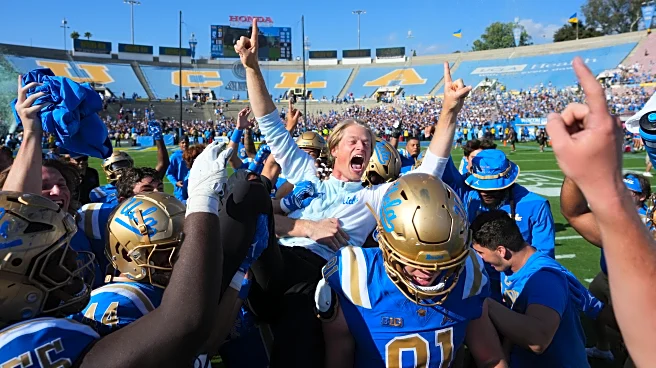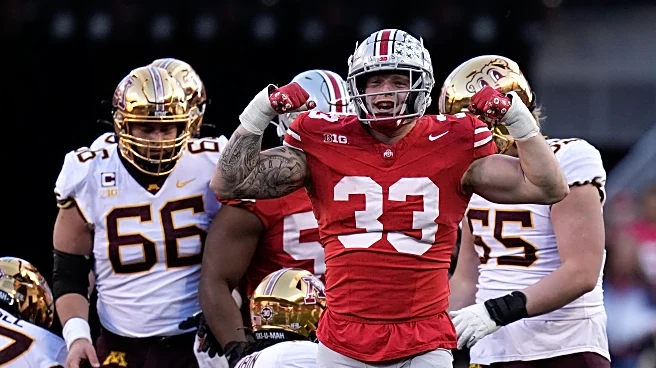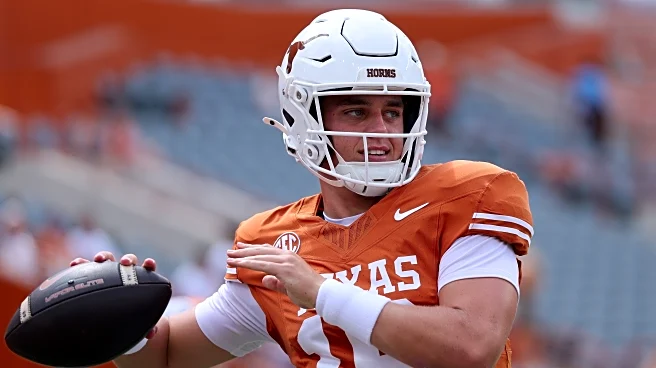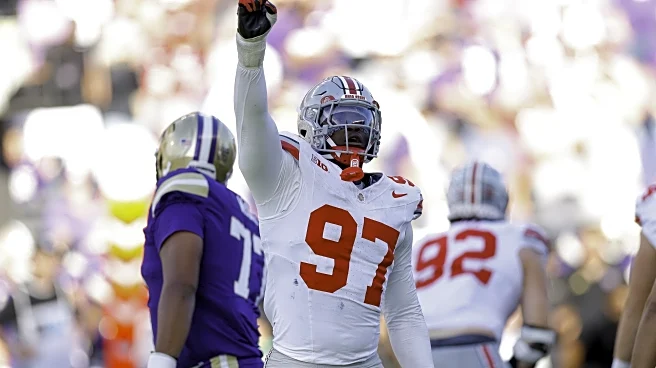What's Happening?
Ohio State continues to dominate the 2025 college football season, maintaining its position as the number one team in the rankings. The Buckeyes have showcased an exceptional defense, allowing only 5.5 points per game and preventing any red-zone touchdowns. Their offensive prowess is equally impressive, with quarterback Julian Sayin leading the charge alongside standout players like Jeremiah Smith and Carnell Tate. Ohio State's recent victory against Minnesota, with a score of 42-3, further solidifies their status as the top team. Meanwhile, Penn State and Texas have experienced setbacks, with Penn State losing to UCLA and Texas falling to Florida, impacting their standings in the rankings.
Why It's Important?
Ohio State's continued dominance in college football highlights their potential to secure a national championship, influencing the dynamics of the sport. Their strong performance sets a high benchmark for other teams, impacting recruitment and strategic planning across the league. The decline of teams like Penn State and Texas could shift the competitive landscape, affecting conference standings and playoff prospects. This development is significant for stakeholders such as universities, sponsors, and fans, as it shapes the narrative and excitement surrounding the college football season.
What's Next?
Ohio State will aim to maintain their unbeaten streak as they face upcoming opponents, with the potential to further solidify their position in the rankings. Teams like Penn State and Texas will need to regroup and strategize to recover from their recent losses and improve their standings. The second half of the season will be crucial for these teams as they strive to qualify for conference championships and secure playoff spots. The evolving rankings will continue to influence team morale, fan engagement, and media coverage.
Beyond the Headlines
Ohio State's performance could have long-term implications for college football, potentially influencing recruitment trends and the strategic focus of other teams. Their success may inspire changes in training methodologies and defensive strategies across the league. Additionally, the shifting rankings could impact television ratings and sponsorship deals, as teams vie for visibility and support. The cultural significance of college football in the U.S. underscores the broader societal interest in these developments.












